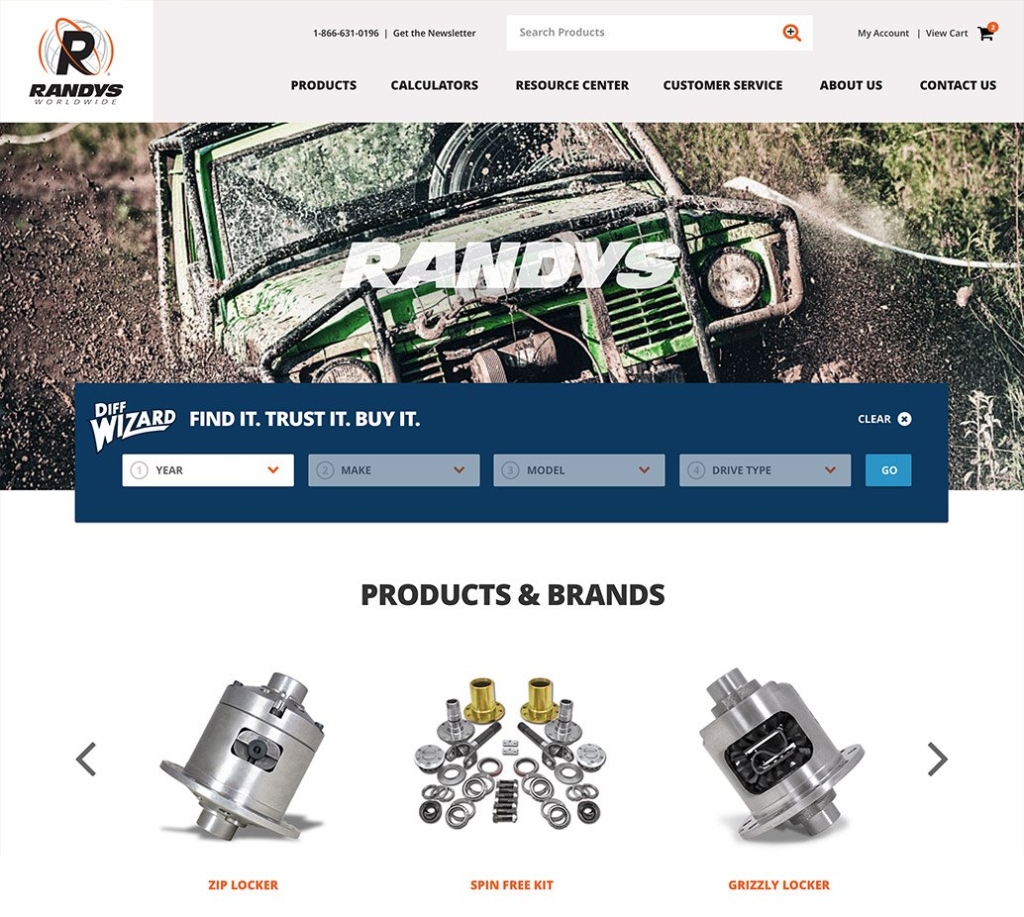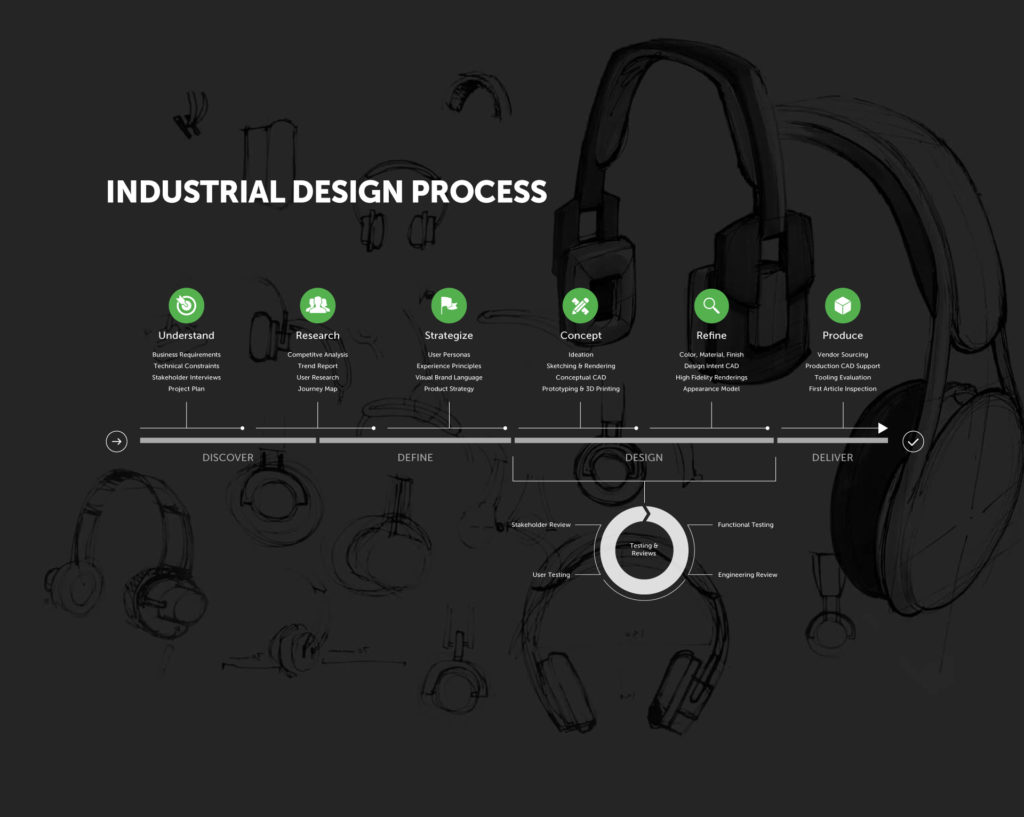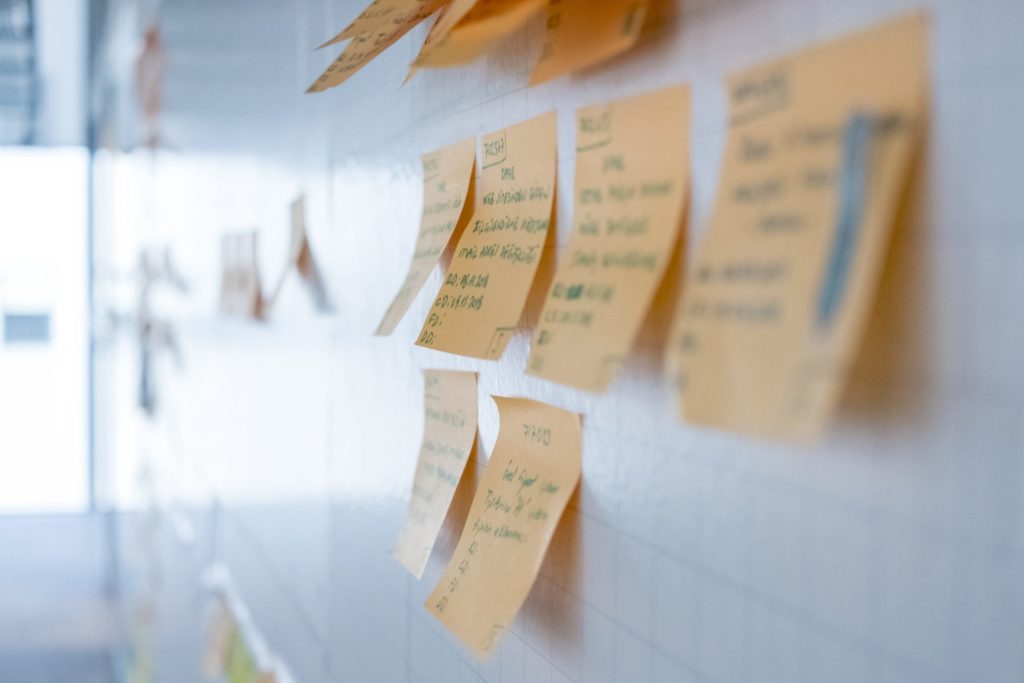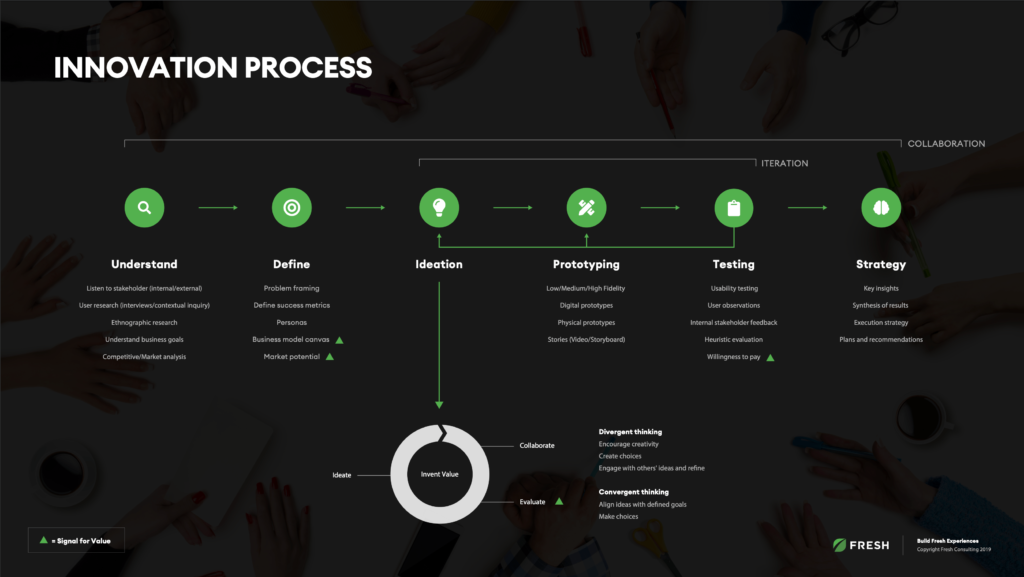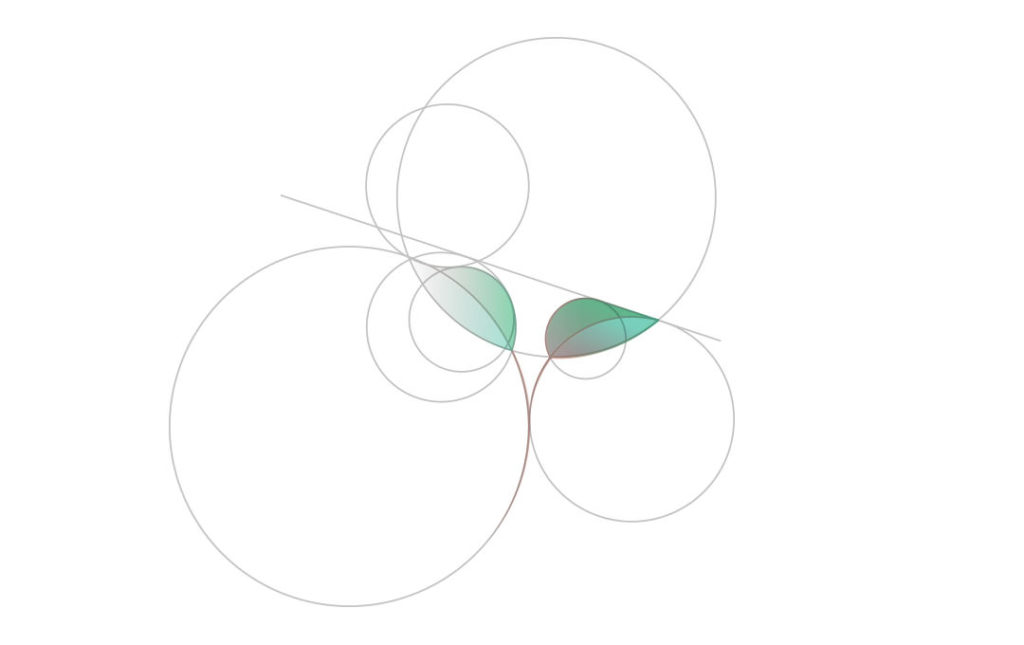Article
UI/UX Principle #35: Understand Constraints to Enhance Creativity

The word “constraint” – a limitation or restriction – has a somewhat negative connotation.
By definition, it limits the array of possibilities. This can be a point of frustration for designers and developers with pie in the sky visions for innovation.
But what if we thought about constraints in a different way? Do we accept them at face value, conceding to the fact that some constraints don’t have a workaround? Or can project limitations actually work in our favor?
We argue that constraints allow designers to think freely within a set of parameters. By having a clear frame for your solution, you can develop a strategy that works.
As a point of comparison, consider the art of painting. Painters usually have some sort of canvas with preset dimensions. They might have to work with a limited color palette. The timeline might be a consideration as well – a one-hour commercial job requires a lot less time and money than hiring a virtuoso to paint the Sistine Chapel.
The point is that it’s important to set the stage for efficient, productive, and results-oriented design work. Instead of just thinking of constraints as a hindrance to creativity, we recommend viewing them as a helpful starting point that can bring focus, clarity, and understanding to your design process.
Constraints Give Us a Starting Point
Creativity thrives off constraints that define the challenge.
There are a multitude of constraints designers and developers face. At Fresh, we’ve found that they generally fall into four categories: scope, audience, technology, and standards. These categories aren’t all-encompassing, but they shed light on the typical limitations designers should consider.
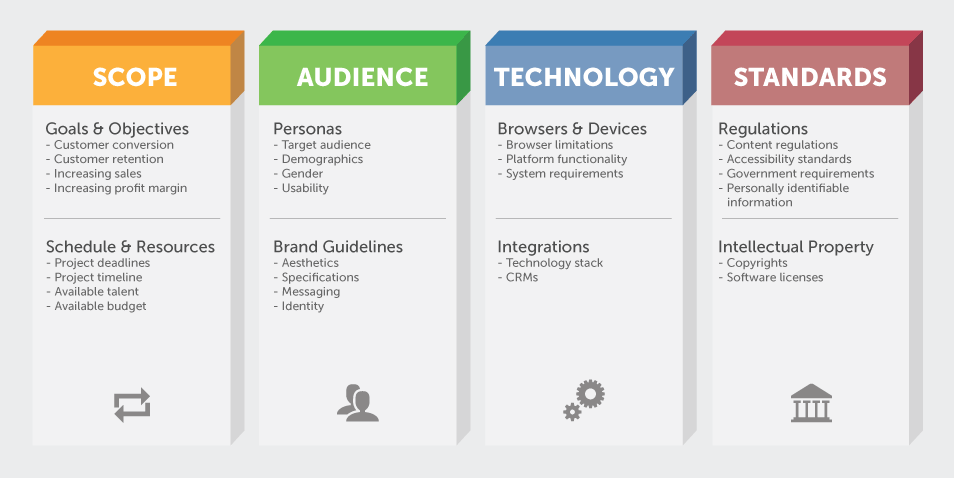
Because we understand that constraints are inevitable, our UI/UX design process starts with “Understanding.” We intentionally set out to understand constraints, because they frame the problem in a way that allows us to understand how we can creatively solve it.
In Creativity: How Constraints Drive Genius, David Sturt writes “Constraints give us a starting point and some building blocks to work with [ . . . ] they’re a starting point for seemingly endless creativity and possibility.”
Designer, developers, and digital strategists should carefully consider the constraints that define what’s possible. Sturt refers to constraints as “building blocks” – desired product features, project timeline, budget, brand guidelines, target audience, user needs, and business objectives all serve as the foundation for design. With these important pieces, you can exercise creativity, and in an economic and realistic way.
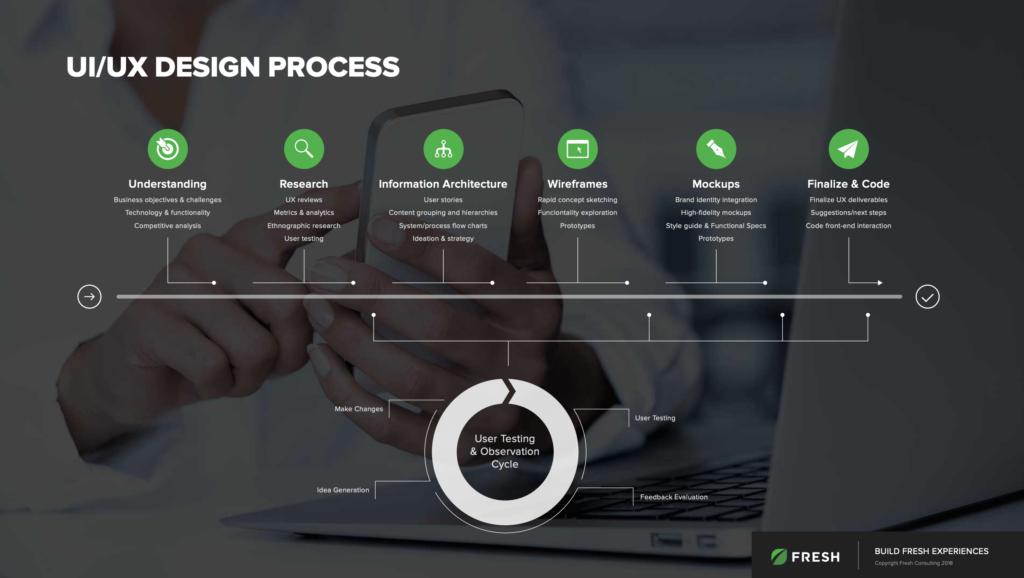
Constraints Help Us Focus on What Matters Most
For the first iteration, we recommend creating a Minimum Lovable Product (MLP) that can be expanded upon in the future. In the whitepaper The Strategy of Starting with Less and in the abbreviated post, Start with Less to Create a Truly Lovable Product, we discuss the idea at length.
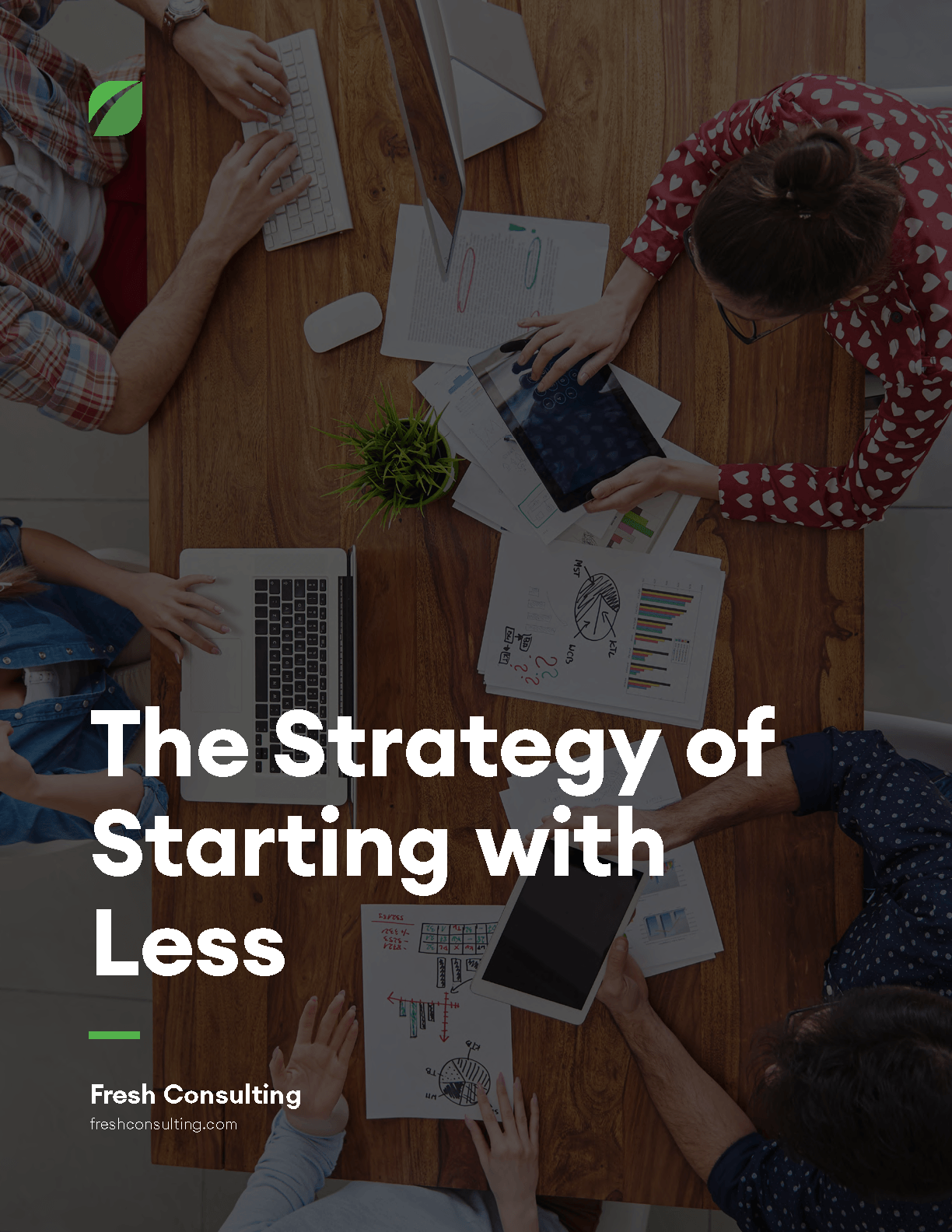
By paying attention to constraints – and working within the creative space they afford us – it’s possible (and probable) that you can create something slim and functional that users will adopt. The alternative is creating a feature-stuffed product that risks ignoring what’s realistic.
In Finding Inspiration Through Design Constraints, David Herring posits that “Constraints help us focus on only the things that matter. As our constraints are revealed, so do they reveal the solutions that aren’t possible which might have been a distraction.”
The truth is, there are a lot competing interests and possibilities to be distracted by. Given the capacity of human imagination, innovation doesn’t have discrete boundaries.
But specific projects do. By ignoring project constraints and letting imagination run completely wild, you risk creating a product that ignores what customers actually need and what’s practical for the business you’re working with.
Constraints Can Guide Decisions and Resolve Ambiguity
Design problems are complex, composed of multiple tangled, interrelated layers. Our task as designers is to suss out creative solutions that take this reality into account.
With so much complexity to consider, it’s often difficult to see a clear-cut answer. It could be argued that for some projects there isn’t a single, clear-cut answer. Constraints help clear up some of that uncertainty by showing us which possibilities are viable and should be pursued.
“User experience design is problem solving, and with all problems there are multiple potential solutions,” writes Herring. “By embracing our constraints early on, we remove some of that ambiguity and can quickly rule out weaker concepts to get to better ones faster.”
Ambiguity can be a frustrating roadblock – constraints don’t need to be. Instead of imagining constraints as insurmountable obstacles, try imagining them as guiding lampposts in a foggy landscape of possibility.
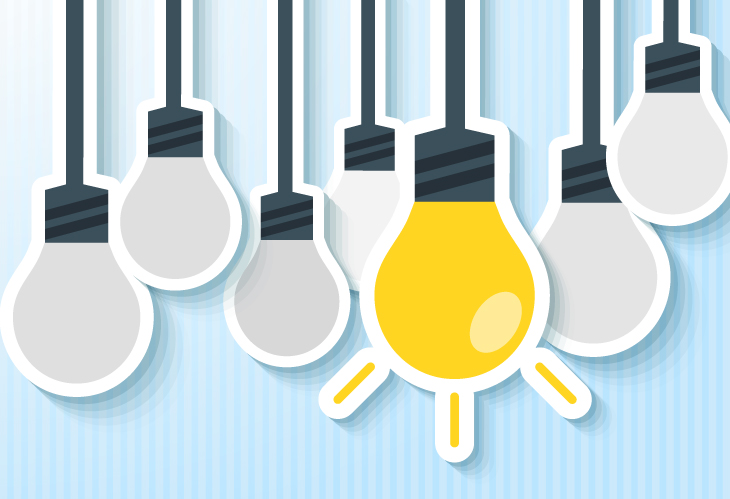
Conclusion: Constraints Help Us Expand What’s Possible
Constraints are a business reality. But if we always work within constraints, can we advance the possibilities of design?
Understanding constraints doesn’t mean we can’t push back against them. We may have a budget of $50K and push for $100K to accomplish a broader objective. We may have a technology constraint, but our consultation phase might reveal that the best solution involves changing up the stack – the resulting effect could be significant enough that the solution is worth arguing for. We may have a timeline and use that to decide how to split up the most important deliverables and wrap other ancillary deliverables into a subsequent phase.
Marli Mesibov elaborates on the fact that it’s important to push back against constraints. In Breaking the Constraints, she writes, “When it comes to cultural constraints – i.e. what users are familiar with – we are faced with the age-old philosophical question: what is our role as UX designers? [ . . . ] It is not our responsibility to remove every constraint. It is, however, our responsibility to separate the useful constraints from the barriers, and continue the gradual fight against seemingly permanent walls.”
Constraints, by nature, indicate what is possible; specifically, in regard to a particular project. By using constraints as a starting point and pushing back when clients would naturally settle for less, it’s possible to advance the possibilities of design.
Our role as UX designers is to create products that work, for both clients and the users of their products. But it’s also our role to innovate, moving beyond what’s accepted at face value. It’s our job to ask “What If?” and when appropriate, ask our clients to do the same.




